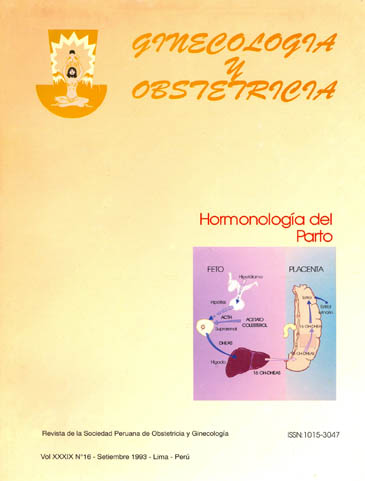Low birth weight. Associated factors.
DOI:
https://doi.org/10.31403/rpgo.v39i1366Abstract
In a population like ours, it is still a problem handling underweight newborns due to its high perinatal mortality and morbidity; which should be prevented with proper prenatal care where risk factors are identified and appropriate action can be taken in a timely manner. This descriptive, retrospective study aims to analyze some maternal factors and pregnancy, to seek his relationship with low birth weight, prematurity or by or intrauterine growth retardation in fetuses at term, compared to the general population. For which 3,616 Perinatal Medical Records stored in the SIP Maternal Perinatal Institute in October 1991 to September 1992. A 8.3% incidence of LBW of which 57.5% were IUGR fetuses and fetuses of 42.5% was found to be reviewed preterm. There was no significant difference in factors like maternal age, education level and marital status; as if there was a difference in the presence of prenatal care in preterm (p 0.001) but not in the IUGR. Among the own pathology of pregnancy and complications, no greater association of Pre-eclampsia and multiple pregnancy in IUGR and largest association of premature rupture of membranes and third-trimester bleeding in premature babies. EI 41% of fetuses with IUGR and 67% of preterm fetuses showed demonstrable pathology associated. The perinatal mortality in preterm, was 8 times higher than in the general population and in the IUGR. There was no difference between the last two. It can be concluded that the lack of prenatal control related to the increased incidence of prematurity and mortality is markedly increased in this group. IUGR fetuses are born in better condition but have high neonatal mortality and morbidity associated with consequences that are not intended to assess in this work.Downloads
Download data is not yet available.
Downloads
Published
2015-07-15
How to Cite
Ayllon Bulnes, G., & Salvador Yamaguchi, A. (2015). Low birth weight. Associated factors. The Peruvian Journal of Gynecology and Obstetrics, 39(16), 57–66. https://doi.org/10.31403/rpgo.v39i1366
Issue
Section
Artículos Especiales
















